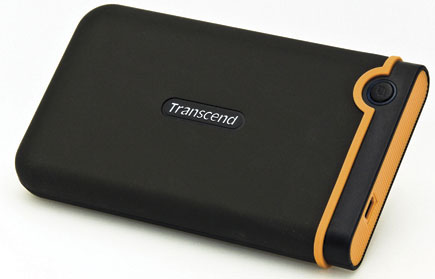Image File Backup And Storage Roundup; Portable Drives And Online Backup Keep Data Safe & Accessible
The digital image age has raised many questions and concerns about the safety and protection of precious image files. How do you back up memory cards on the fly? What if you need to access images not on your portable computer when traveling? Are there safe and reliable options other than hardware to back up all those digital images? And if we switch operating systems, is there a good way to transfer files between incompatible operating/file systems (namely, Mac to Windows NTFS or Windows to Mac OS Extended/Journaled)? We did a survey of a large number of devices that can help you handle your image files.
Portable Hard Drives/Card Readers (And Sometimes Viewers, Too)
One popular option for those who don’t want to lug their computer in the field, or on the road for that matter, are portable drives that feature slots that accommodate various memory cards for backups to a built-in hard drive, with most serving as card reader/writers. CompactFlash (CF) and Secure Digital (SD) support is most popular, followed by Memory Stick (MS), with xD-Picture Card trailing. Adapters may be needed to use cards that are not directly supported. Select devices let you swap out the drive, should the need arise.
A portable device of this kind proved to be a lifesaver on a trip to the Caribbean. At the time, I was only working with 2GB CF cards and before long I’d filled up the five cards I was carrying. So I transferred the files from each card to my portable drive and was able to start fresh. Of course, not everyone trusts their valuable images to a pocket-size drive. So if you wish, use the device purely for what it was intended for—as a back-up storage medium. Then safely store the full cards in a card wallet (with the back of the card facing you to indicate the card is full and thereby avoid using them accidentally).
 |
Increasingly these devices sport a color screen and also serve as a viewer, but those devices that are strictly relegated to backup employ monochrome displays. If you feel more comfortable previewing images before deleting them from the card, then the color display is a must. Otherwise, go with the less expensive monochrome screen. A few devices also verify card uploads, if you don’t mind the additional time required by this process, but time spent in verification seems well spent.
While the primary function is back-up storage, a few of these devices also serve as multimedia players, supporting not only slide shows on their increasingly large and highly viewable color screens, but also movies. And as a bonus, they may throw in music (largely MP3) playback. Given that video is growing in popularity among D-SLRs, as well as point-and-shoots, make sure your camera’s video format is supported. As for still images, the majority support raw file playback, as well as JPEG, and will display EXIF header data.
These devices largely connect to your computer via USB 2.0. A rarity is FireWire or ultrahigh-speed eSATA connectivity. Unlike typical mobile hard drives, each of these devices is battery-driven. USB and FireWire connection to a host computer serves to charge the device’s batteries (not applicable to eSATA or necessarily to all USB devices in this group)—and this usually applies only when the device is powered down. If you’re transferring large volumes of data from device to computer or using it as an external drive, you should connect the device to an electrical outlet via the supplied charger/adapter for uninterrupted power flow. Otherwise, you’ll drain the battery, disrupt the transfer, and possibly crash the drive and corrupt data in the process. Important: Charge device fully before first use. For the initial charge, I recommend using the supplied charger, not the computer.
Mobile Data Storage: Pocket Hard Drives
The vast majority of pocket hard drives don’t read memory cards via a slot. Nor can they be conveniently connected directly to a camera for instant downloads. So why use them? They exist as an expedient means of backing up data from your hard drive or to serve as an external drive for a laptop. But their utility extends beyond that.
Because of their small size, you can carry these portable drives in a camera bag without even noting their presence. These drives provide insurance against damage to or theft of your primary computer—the one you left at home or the laptop you left in the hotel room. If you carry a laptop and download pictures to this computer after a day’s shooting, connect the portable device to the notebook and copy the files there as well. Even if you don’t delete the files from the memory cards, you’ll have redundant backup—and that’s a very wise move for valuable pictures you’ve spent countless moments and dollars to capture.
These drives are powered directly by the computer once you hook them up. The vast majority are USB 2.0 compliant (look for SuperSpeed USB 3.0 products in 2010, according to www.usb.org). FireWire and eSATA connectivity is available on select devices. At least one portable drive comes with its own FireWire docking station for speedier connection/removal.
You may be looking at a decision here: between a standard pocket-size drive and a card-reading drive. Since the card drives can also be used as a conventional external drive, it would seem to represent one-stop shopping at its most convenient. However, the majority of these drives tend to be bulkier than a standard drive of comparable capacity, and likely cost more. At the very least, whether it reads cards or not, a portable drive is a must-have traveling companion. Wherever you have access to a computer with a compatible port (and USB is the safest bet, since it’s universal), you’ll have access to your data.
- Log in or register to post comments

































